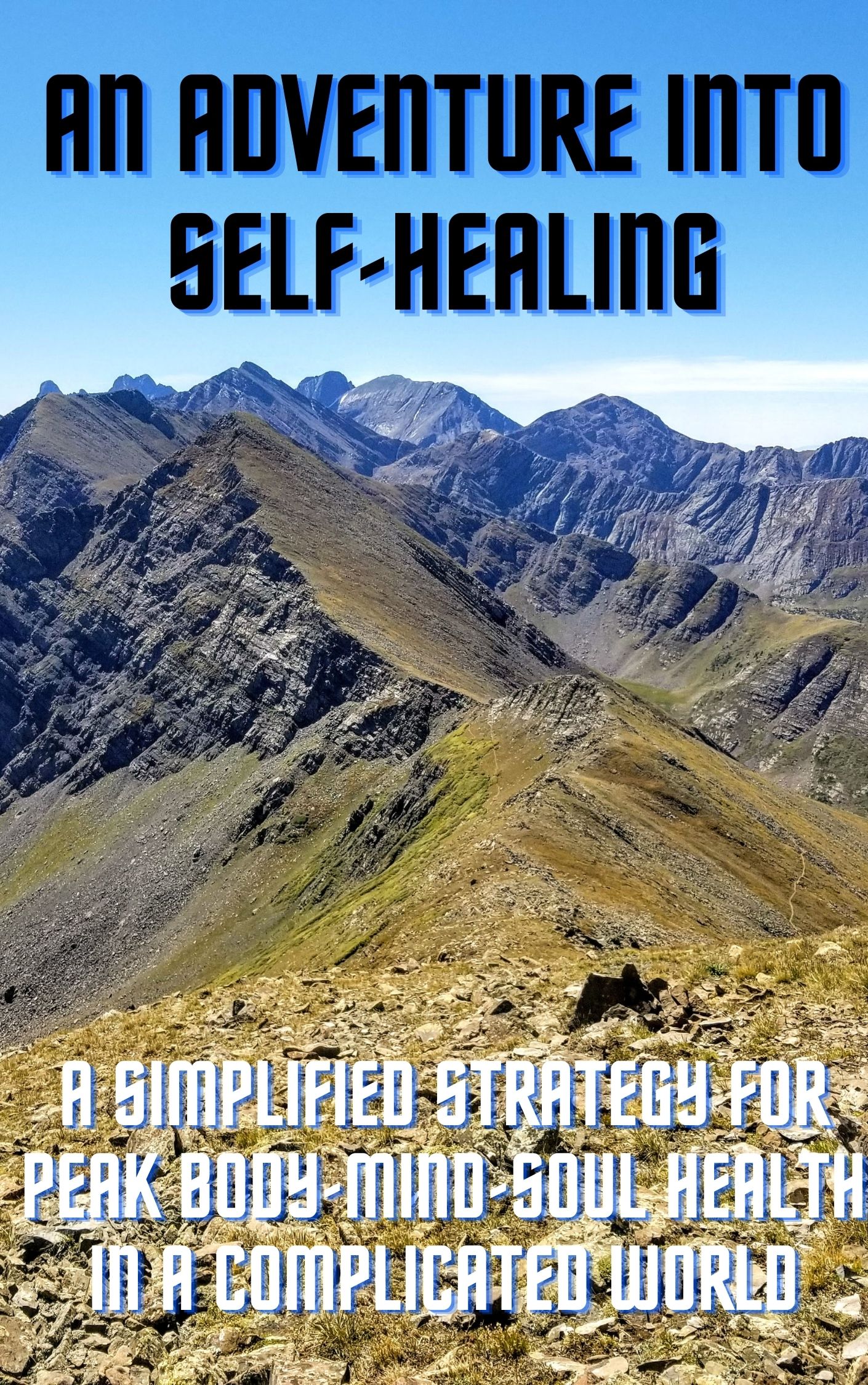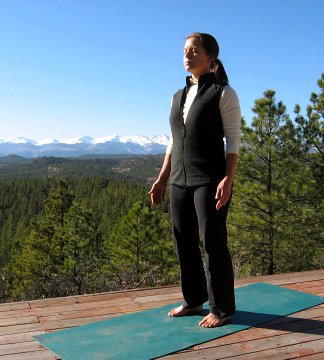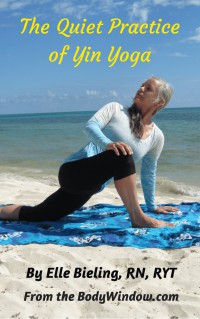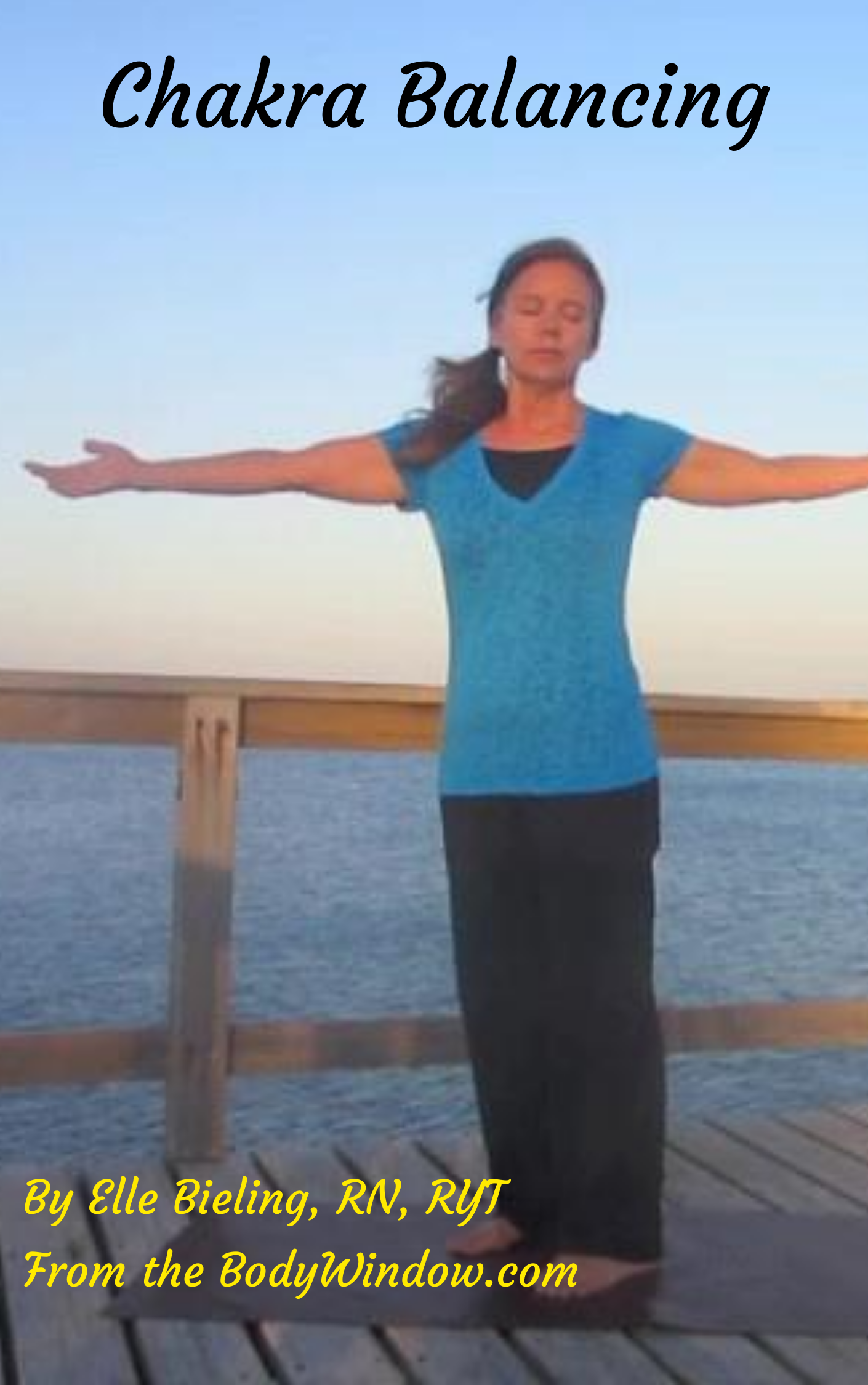Way ~ Through Your Body!
- Home
- Intuitive Movement
- Understanding Your Body
Understanding Your Body
Understanding your body is important in understanding your inner condition. Your posture and the way you move tell the world all about what is in your heart!
'No knowledge can be more satisfactory to a man than that of his own frame, its parts, their functions and actions.' ~ Thomas Jefferson
Understanding your body through the study of body posture and body movement is a fascinating subject to me. Your posture and how you move reveals to the world and to you your inner state of affairs.
Nothing is more telling about you than the shape and how you hold your body. Your body is a direct reflection of how you have chosen to live your life.
The Body Window's Self-Guided Healing Course is Now Reduced to only 19.95 USD!
Click here to learn more about how this healing course can change your life!
Your Body Window is shouting to the world your beliefs about yourself! If you can have more body self-awareness by understanding your body in this manner, this will aid you in your journey to healing the body-mind-soul.
The Over - 50 Look
The lack of understanding your body and what it says to the
world becomes especially telling in my generation, the over 50 crowd. I
can tell instantly by just looking at a person, whether or not you have
chosen to care for your body-mind-soul, just by looking at your body.
Often your body self-awareness is sorely lacking.
The over 50 crowd is fraught with weight issues, emotional issues and health issues from many years of ignoring the body-mind-soul connection. They move stiffly and are guarded in all things physical. They hold their bodies stiffly and grumble or brag about their aches and pains.
They are the embodiment of a lifetime of pretending, escaping and drowning their sorrows in a bottle, a can, or a package of pills, alcohol or other addictions.
They work too hard and have no self-awareness of what they have been doing with their body-mind-soul. Their bodies are a direct reflection of their beliefs and their lack of body self-awareness.
So beware, if you are under 50 that this will be your destiny unless you choose to take care of yourself at a time when it is much easier. A lifetime of unhealthy lifestyle choices are very hard to reverse when you are over 50. But it can be done!
If you are in the over-50 crowd, understanding your body and it’s connection to your inner-self, your true self, as a reflection of your soul is the first step toward body self-awareness and healing of your body-mind-soul. Understanding your body needs to be an ongoing process.
your environment and attitude "shape" you
There are current studies that suggest that a child’s
emotional state, and his environment shape the development of his
physical body as much perhaps, as genetics. Understanding your body as a
lifetime reflection of your emotional state is a concept foreign to
most people. We are just too unaware of what our body posture and body
movements mean.
Just as a beaten puppy soon learns to cower, so a child, in more subtle ways, learns to carry and hold himself according to his learned beliefs about himself and slumps over or cowers if beaten either mentally or physically. If the child is happy and carefree, and grows up in a healthy caring environment, he develops a healthy, happy body that moves with grace and ease.
If a child grows up in a dangerous environment, he learns how to hide his fear by puffing up his chest, in a way that says, ‘I am not afraid,’ and he holds his upper body rigidly with chest out and arms hanging stiffly behind him.
If a child’s spirit is broken, his shoulders droop and he hangs his head, in an abnormal, forward head posture (non-neutral) and develops a humpback over time. He might poke his behind out, though, in a defiance that says, "kiss my a--!"
Understanding your body’s posture and what it says about you is a step toward body self-awareness and body-mind-soul healing.
good or bad posture?
I love to look at people’s body postures, and try to understand their life’s story. Their
Body Window
is speaking loudly to the world as to their inner state! As I become
more alert to this, I am getting better at understanding their history.
There is much fascinating literature on the subject. Look around you and do a posture analysis on others as you watch people. See if they hold their bodies normally, upright and in an easy neutral position. Very few people have body self-awareness. Understanding your body and its story is a good challenge for your to become more body self-aware.
If a person is not relaxed and upright, see if they are bent over forward, or backward? Does their head slump forward with a hump in their upper back? Do they stand 'at attention' like a soldier, ready for a fight? Do they cross their arms and lock their knees in inflexibility? Are they unable to stand still, rocking back and forth from one leg to another? Do they have a look of calm or do they seem anxious?
Do the arms hang easily straight down, or are they held in a forward or backward posture? Does the back have the normal curves at the neck, mid-back and lower back? Or is the neck abnormally pulled forward or the lower back curvature grossly exaggerated, from bearing too many burdens?
Understanding your body messages and those of others is a fun thing to do the next time you go out.
Body postures and body movements are all very telling signals that your body is giving to the world. All of these abnormal, non-neutral postures will take their toll over time. Understanding your body and how your Body Window speaks to the world will help you understand your body-mind-soul issues. When you are more body self-aware, you can take the next step toward healing.
Are You a Humpback?
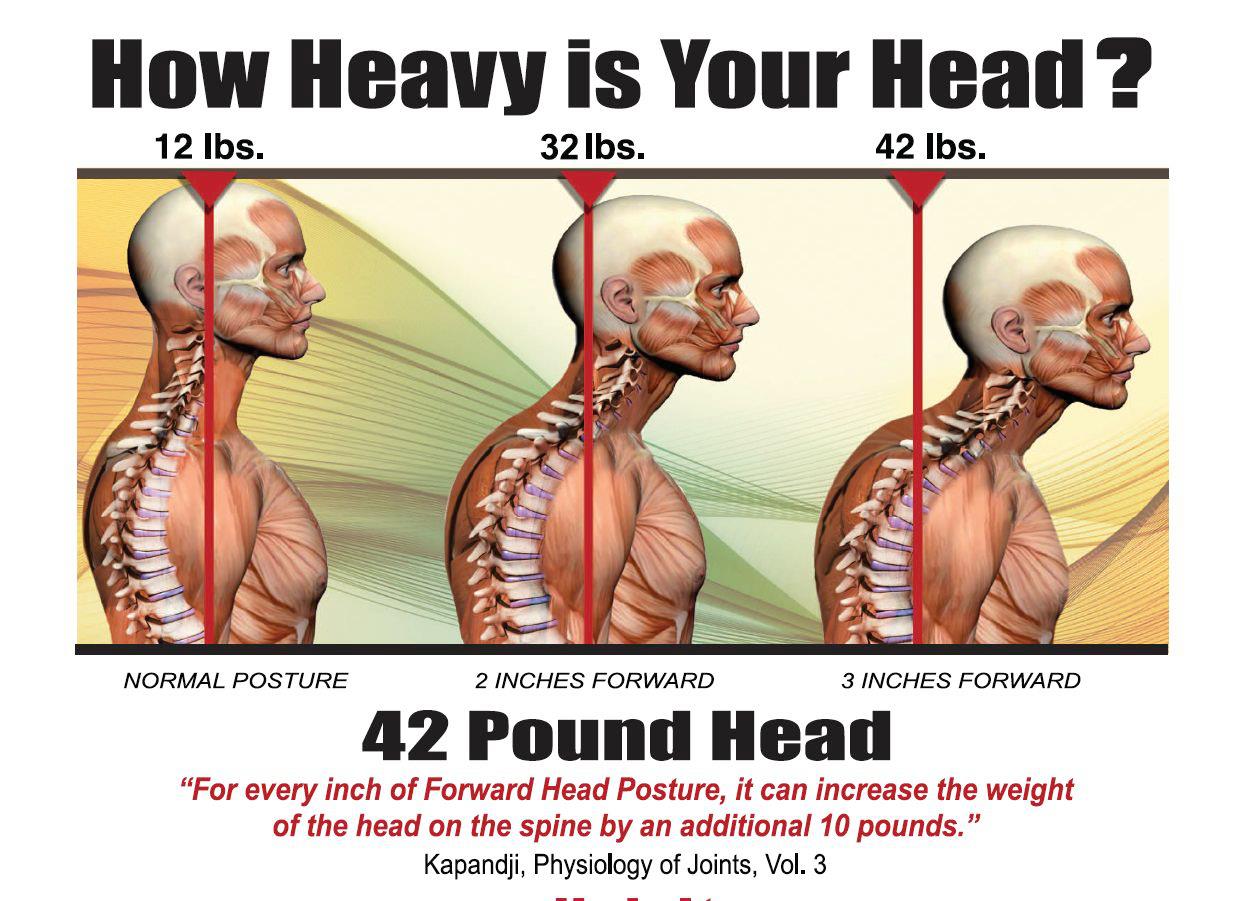
The humped back posture, in medical terms known as kyphosis and the concomitant forward head posture and rounded, forward shoulders, will lead to problems with headaches, neck aches, back and shoulder pain.
As you can see from the diagram, for the average person, the humped back places up to an additional 42 lbs. of extra downward pressure on the lower back! Is it any wonder that many individuals have lower back pain?
Kyphosis will eventually cause shallow breathing as a result of the forward compression of the chest. This abnormal posture is no longer associated with the elderly alone. I see this poor posture more frequently than any other posture.
As one ages, and the humpback deepens, one’s overall mobility will decrease, increasing the risk of falls and other health issues from the decreased oxygenation from the shallow breathing.
Some studies even suggest that a person will die sooner if they suffer from kyphosis, in fact some studies have shown that older men and women with advanced kyphosis have as much as a 44% greater rate of mortality than those who do not!
This posture is often created when we slump over our desks and our computers all day long. It is as if the weight of the world is on our shoulders. We often slump forward when we stand for a long time as well. Understanding your body and its mechanics when you sit or stand for long periods of time will help you understand how to improve your posture.
Learning to develop good posture is of great importance if you wish to find health. Staying present to yourself through listening to and understanding your Body Window and developing intuition by using your body, and by doing intuitive movement will assist you in staying whole or in becoming whole.
I cannot emphasize enough the importance of body movement and body self-awareness! Think of body movement and awareness as therapy – therapy for the body-mind-soul! This is understanding your body and how it relates to your inner condition, your true self.
your body movements are telling
As you become more body self-aware and observe your body movements, they are also very telling. Do you move with fluidity, grace and without pain? Or do you push hard when you walk forward? Does one hip, one knee, one ankle or your feet give you pain when you walk? Is the pain chronic? Does this mean that you lack some sort of balance in your life?
Perhaps, instead, both of your hips, knees and/or
ankles bother you? Do your body movements say anything about your
level of pushing too hard and your determination in life?
If your legs don’t hurt at all, congratulations, this may not be an issue for you. Do you prance on your toes when you walk or do you push down on your feet? Do you walk with a bounce? Does this say anything about the joy and love in your life?
When you walk, do your arms swing easily? Are your body movements letting the world know if you are sad or happy, burdened or free? Understanding your body movements are important as well as your posture.
Do you hold your arms stiffly when you move? Do you have your hands open or closed?
Do you walk with your head down, up or do you have an abnormal forward head posture and a stiff neck? Does this say anything about your fear, vision or clarity in moving forward in your life? Do your body movements show that you are embarrassed or ashamed with a hanging head?
Do your body movements state that you are held back, or open?
Meditate on your body movements, or ask someone to observe your posture and your gate, and ask them what they see. You might be very surprised. You may learn a lot about yourself.
Understanding your body in this manner will change your understanding of yourself.
how to improve your posture
I define good posture, from more of an ergonomic perspective, as a neutral posture or position. It is more than just a "straight posture." In fact, a straight posture seems military and tense to me.
Keeping your body in a relaxed, but supported posture, in as neutral a position as possible when you stand, sit or walk or when you work is a difficult proposition.
Neutral does mean straight and aligned, but with neither flexion or extension of any muscle. When standing, sitting or walking, neutral means holding the natural curves of your spine at all times, especially the lumbar curve of the lower back.
It is especially important to keep your back in a neutral position when lifting or bending, to avoid back injury. Twisting and lifting at the same time is lethal for your back. So is slumping your back while lifting. Repeated movements of the back like this will eventually lead to back problems, every time.
Back problems are always a result of incorrect repetitive movements of the back. Learning how to improve posture involves learning to keep your back in the neutral position for all things, all postures and all movements.
Understanding your body posture as it relates to the neutral position is necessary to maintain a healthy back. You can learn how to improve your posture through practicing the Mountain Pose in Yoga. Most Yoga classes don’t do the Mountain Pose often, because it requires nothing other than standing calm in a good posture.
In the Mountain Pose, you feel neither flexion or extension of
anything, but feel grounded with your feet, as you feel your weight
flowing down through your body, grounding down through your feet. You stand with your feet hip-distance
apart. You feel no tension in the lower back or buttocks. Your spine
is in alignment, with hips slightly back to hold your lumbar curve.
Your navel is pulled inward toward your spine.
Your knees are relaxed and unlocked, with a micro bend. Your arms are relaxed at your side, without tension as you feel your shoulders widen as your shoulder blades move back and down.
Your head feels perfectly balanced between your heels and your ears are aligned with your shoulders. As you relax downward with your weight and your arms, do not attempt to "pull up" in any way.
You hold the position allowing your weight to flow downward through your body, legs and feet and into the ground. As you feel the energy move downward, you become aware of an opposite movement of energy upward from the ground, through your feet, to your belly and through the top of your head.
The natural sensation of the upward movement of energy will make you feel elongated, as if you were a puppet on a string through the top of your head, and God was your puppeteer. Observe this up/down flow of energy.
The Mountain Pose teaches you how to improve posture by understanding your body and becoming more body self-aware. It is a great way to become aware of your posture and to correct it and learn to maintain the neutral, well-supported position. The Mountain Pose is a very effective posture exercise.
If you are sitting, the same good posture rules apply. Keep your spine supported by your core, in an upright position, the same as if you are standing in the Mountain Pose.
No slumping by rounding your back. A good ergonomic chair will help you maintain the proper lumbar curve of the spine or you can buy a lumbar pillow to remind you. Keep your feet on the floor with knees slightly lower than your hips.
You eventually hurt yourself, whenever you deviate from a neutral position by moving improperly or holding your body improperly on an ongoing and regular basis.
The muscle tension required to hold your body or perform body movements in a non-neutral state for any length of time is enormous. The energy required to do so is very taxing on your body. Understanding your body and how it holds tension is vital to understanding how to keep it healthy.
The emotional origins of the way you hold your body, leads to injuries and pain because you have lost the relaxed, neutral state. Your new normal becomes one of muscle tension and strain.
Some of your bad habits with your body can be overcome by mentally retraining yourself, but some cannot, without very constant and conscious work. This is due to years and years of abnormal holding patterns and poor posture. Body self-awareness regarding posture is the first important step before change can begin. Learning how to improve posture by staying aware is the key.
Keeping body self-aware at work, with repetitive motion tasks can be overcome through mental retraining. For instance, when you type, always be mindful of holding your hands so that your wrists are not bent, but neutral. If you are mindful of curling your fingers and lifting up your hands, your wrists won’t bend.
Straight wrists are neutral wrists, i.e. wrists in a better position. If you type with relaxed hands, focusing on not pounding the keys, and putting your elbows out slightly, so the wrist will not deviate from side to side, but stay straight, you can type with ease and without injury.
Dropping the shoulders so the trapezius and neck muscles are not tense is also mandatory. This is the best typing posture to use at your keyboard. Understanding your body to keep it neutral is the key to maintaining body health at work.
becoming more aware of your body movements
There are many more practical applications for keeping your body in neutral to optimize its performance without injury. Understanding your body to keep it healthy and finding body self-awareness is the first step!
I have read where flowing and easy movement requires that you never lock your knees. In order to keep your knees healthy, finding body self-awareness in how your use your knees to keep them relaxed with minimal effort as you move is so important. Your knees are your body's shock absorbers.
my personal knee movement story
I went on a long backpacking trip, where I carried a heavy pack for 8 hours each day, totaling 22 miles over a two-day trip. We hiked up over a high mountain pass and down, then up another drainage to make a high camp on an approach to a 13,800+-foot mountain summit. We reversed the trip on the hike out the next day.
Usually after such adventures, I am stiff for days, my hips and knees aching from performing an activity to which I am unaccustomed. I rarely backpack now at my age, and just mountain climbing with a light pack is more than sufficient. But I had in mind a particular mountain that I really wanted to summit, so it was worth the effort.
On this hike, I told myself I would be mindful of how I moved my legs, my hips and especially my knees. I also succumbed to using hiking poles, which in the past I considered using them cheating, in addition to their being cumbersome. (All new skills require some adaptation and practice).
I became more open to useing the hiking poles, however, because I read that they could significantly reduce the stress on the knees, especially important with a backpack. This was now important enough to me to try to use them.
With hiking poles in hand, I was determined to stay conscious of keeping my feet and toes pointing forward. I kept my knees in a micro bent position when I pushed forward, from the step. I did not lock my knees, ever. I focused on using them as true shock absorbers but they did not carry the weight of my pack. That was up to my legs.
The result was amazing. At the end of the two-day journey, my knees did not hurt, nor did my hips! Just by focusing on my knees, and keeping my feet pointing straight forward, my hips didn’t have to suffer either.
Somehow, I must have been unconsciously rotating my feet outward, which caused an inefficient load on my hips. I must have been locking my knees to also cause stress on them in the past. Understanding your body and how it moves does make a difference, and I was proof.
I won’t comment on my back and shoulders because they took a beating. The soreness there abated in only a few days. I will work on those issues on my next trip. I will include figuring out how to lighten my pack even further. This story shows why understanding your body and body self-awareness is so important!
becoming more aware of your posture
Your posture and your movements demand attention. To be graceful and fluid, you need to be mindful of keeping yourself neutral, relaxed, toes pointing straight and forward.
Your arms need to swing forward and backward, in rhythm, not side to side.
The shoulders need to be relaxed and level, not up and tense. Your neck needs to be straight as you look forward, not up or down.
Your back and neck are never hunched forward, but your shoulders are loose and relaxed. This is how
to improve posture, slowly over time, as you become more body
self-aware and become better at understanding your body.
I often catch myself in various Yoga postures with my shoulders up in tension as I concentrate on the pose. As I move my arms upward if the pose asks this of me, I find myself also raising and tensing my shoulder blades. I breathe, relax, and feel my scapulas (shoulder blades) move downward.
The change in posture with this relaxation is very important. The ease at which I now perform the posture has changed dramatically. This is body self-awareness. Understanding your body for this type of awareness demands that you just focus on it. Practice makes perfect!
The life metaphor is that sometimes only a small, subtle change is all you need in your life to bring about positive results. Just a small change like trusting yourself and saying a simple, positive affirmation for health like "I believe in myself and trust that all I need to know will be there for me just for the asking!"
The small subtle change will often be the beginning of a cascade of positive changes and events in your life! Are you willing to take that small first step? Are you willing to take part in understanding your body and understanding its metaphors?
Your neck posture should be in neutral and your head is straight, looking forward instead of up or down. If you have a hump back practice Yoga postures that open your arms, open your chest, and straighten your neck and back.
Say your Positive Health Affirmations that include, "I have an open heart, I have a straight neck, I look up to find my Joy and Wisdom!" Create the positive emotions that will affect your body and your mind and your soul by creating these affirmations!
Good posture seems so simple. And yet when you look around you, so few have it. Your burdens and your pressures in life are just too great to take the time for yourself. Then your body cannot help but become burdened itself with the overload and your posture reflects that. Learning how to improve posture is one of the ways to change this outlook. When your physical body looks up, your mental state will follow.
The body, mind and soul are one! Understanding your body and its connection to your soul is the key to change. This body self-awareness will speed you to healing of your body-mind-soul. Learn to improve your posture and your overall outlook will improve.
how do you stack up?
With your new-found body self-awareness, watch how people move,
how they stand. And vow to be relaxed, straight and neutral, so you at
least appear to have no issues! By virtue of doing this, you will
notice a change! Understanding your body and keeping it in a good
posture will improve your demeanor.
This neutral, well supported but relaxed posture applies to your standing posture. It also applies to your walking posture and your sitting posture. Nothing helps improve your posture like learning Yoga postures. Good posture, body balance and strength are all benefits of Yoga.
Using just the right amount of force to propel you forward in walking and running, yet exert the minimal effort will take practice. Keeping your knees in a micro-bent position and engaging your muscles to use your knees as shock absorbers is key. Only your body self-awareness through your body’s intuition will tell you when you have it right. Listen to your Body Window at all times. Understanding your Body Window messages takes practice.
If you are unable to discern your truth through understanding your Body Window, you may want to consider a posture evaluation by a physical therapist or other bodywork practitioner. If you are an athlete, please consult the experts in your sport for more specific information!
It also really pays, especially as you age, to practice foam rolling, Yoga, Tai Chi, and Qigong, or work out on physio balls and body balls, or whatever other intuitive movement you choose. You will find that not only will you learn how to improve your posture, and improve your balance, which impacts all your movements, but your strength will also improve.
The National Institutes of Health has now published that chronic back pain can be dramatically improved by Yoga. Chronic back pain is one of the most common afflictions of the modern age, despite the fact that machines do all our work! This is more evidence of the body-mind-soul connection. You have less physical requirements, yet more physical problems in our modern age!
Understanding your body and its reflection of who you are has never been more important than in our stress-filled age. Body self-awareness is a must if you are to achieve body-mind-soul healing and overall health!
The benefits of body self-awareness and bodywork are all immeasurable in your life.
Improving your posture takes conscious awareness of how you hold yourself and how you move.
Commit to consciously being aware of keeping your shoulders relaxed and back (in alignment with your ears) and your neck straight with your head neutral (looking forward not up or down) at all times. Support your lower spine by keeping the slight curve in your lower back at all times. Slightly flex your knees if you are standing.
Don’t say to the world that your baggage is weighing you down. If your head hangs low in the humpback position you are saying to the world that you are overburdened. If your knees are locked, you are telling the world you are inflexible.
Vow to change your posture and just by being conscious of your body and its message, you will change your outlook. Vow to increase your body self-awareness! The small, subtle changes you make as a result will soon become a way of life. Understanding your body in this manner will help you bring about changes in all things in your life and in your body-mind-soul!
Related articles that you may enjoy:
- Self-Love ~ Caring for Your Body is Caring for Your Soul
- Improving Your Body Balance is Improving Your Life Balance
- Exercise Stretches ~ The Metaphor of Creating Space
- Meditative Stretches for Runners
- Neck Stretches for Releasing Neck Pain
- Bodywork Stimulates Your Creativity
- Swing Your Hips When You Walk!
Can't find what you're looking for? Search this website:
Support This Website and Its Mission
Thank you so much for considering a donation to help support this website. I appreciate your thank-you for access to so much free information. If you feel you have been blessed by this website, thank-you for your donation! I promise, that I will continue to provide you with lots of information and pay it forward to all in whatever way I can!
© Copyright 2009-2025, by Elle Bieling, BodyWindow.com
All Rights Reserved
We also hereby confirm, as stated in our Privacy Policy, that we do not sell personal information of any kind.
Protected by Copyscape Plagiarism Checker ~ Do not copy content from this page.
Information on this website is not intended for medical advice. See your health care provider for any health concerns. By using this website and/or practicing any yoga postures, foam rolling exercises or other physical movements contained herein, you are agreeing that you are in good health, cleared by your healthcare professional to participate in physical activities and you release The Body Window from any liability involved in the practice.
